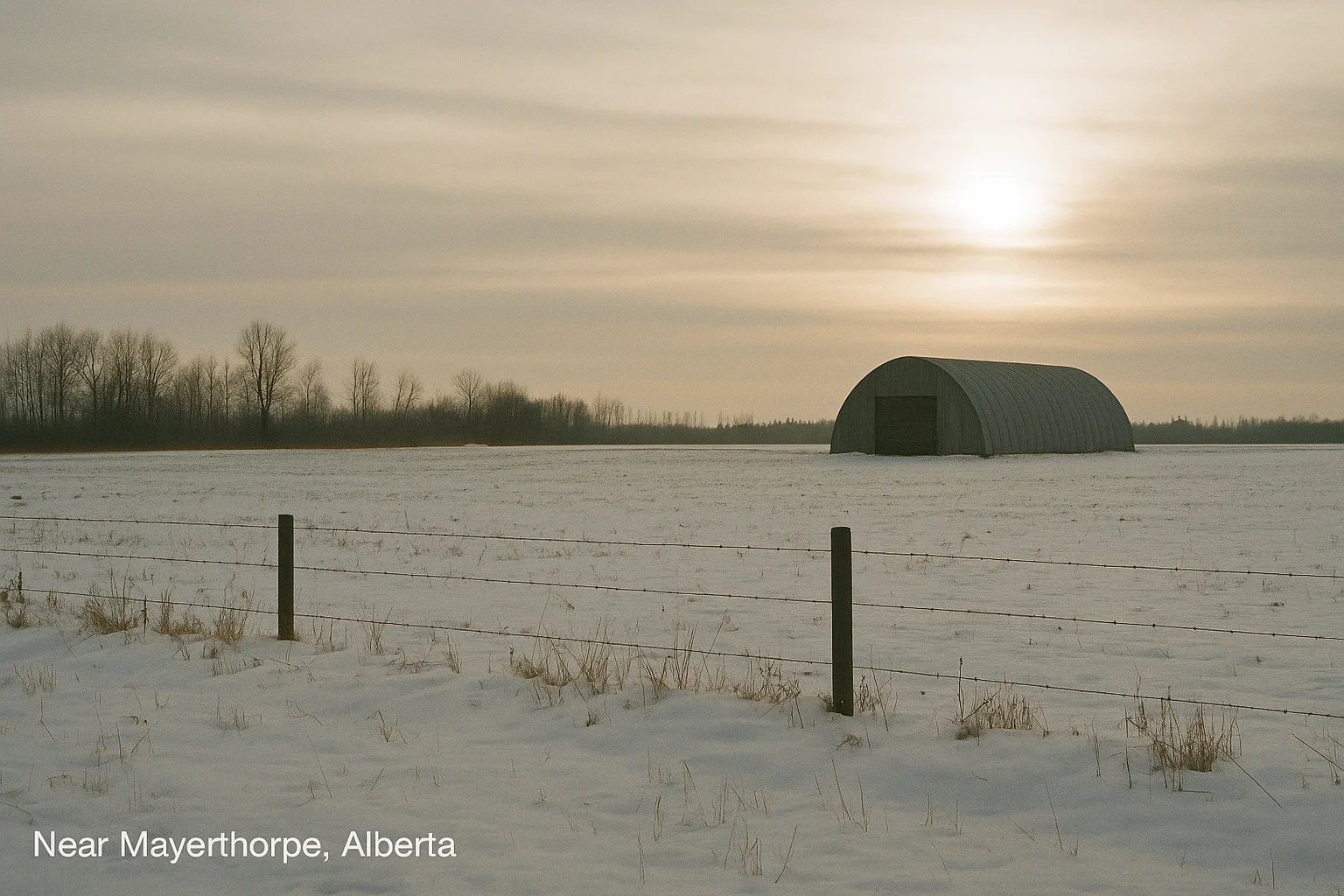
Mayerthorpe Tragedy
by: The Calamity Calendar Team
March 3, 2005
Shadows over Mayerthorpe
It was in the quiet rural stretch near Mayerthorpe, Alberta, where a harrowing chapter in Canadian law enforcement history unfolded. On the exterior, the landscape appeared peaceful, with the snow-covered fields blanketing the countryside in an almost serene embrace. Yet, beneath this calm veneer, tensions were brewing like a storm on the verge of breaking. The date was March 3, 2005 — a date forever etched into the consciousness of the Royal Canadian Mounted Police, or as Canadians more commonly know them, the Mounties.
The Troubling Background of James Roszko
James Roszko wasn't unknown to the residents or the law enforcers in this rural area. A man with a long, troubling history of criminal activities, Roszko harbored a deep-seated animosity toward the police. His record was peppered with violations — from weapons offenses to property theft and, increasingly, illegal cultivation of marijuana. The RCMP had long been following his trails of misdeeds, looking to gather enough evidence to bring his illegal enterprise to a halt.
Roszko was no ordinary adversary. His violent temperament was as much a part of his identity as the farm he owned just outside Mayerthorpe. It was here, tucked away from prying eyes, that he cultivated his lawlessness alongside the marijuana plants that would trigger a cascade of tragic events.
On the Eve of Tragedy: March 2, 2005
The day before the tragedy, RCMP officers commenced an inspection of Roszko’s farm. Their suspicions about his illegal operations were all but confirmed upon discovering marijuana plants within a Quonset hut, alongside stolen vehicle parts. Understanding the volatility of the situation, the officers secured the area, maintaining a watchful eye overnight as they awaited orders for the next steps. However, unbeknownst to them, this round-the-clock vigilance was to be shattered in the blood-soaked hours that would follow.
The Ambush: March 3, Mid-Morning
The morning of March 3 arrived with an eeriness that seemed almost prophetic in hindsight. Little did the officers stationed at the property know that Roszko was stealthily making his way back to his farm, camouflaged by the snow-covered terrain that had become his ally. Navigating a hidden path, Roszko eluded the police perimeter and, upon reaching the farm, what followed was a calculated ambush rooted in retribution.
Shots thundered across the landscape as Roszko wielded his semi-automatic rifle with chilling precision. Not one, not two, but four lives were extinguished in the onslaught. RCMP Constables Peter Schiemann, Anthony Gordon, Leo Johnston, and Brock Myrol — each had come to the farm to uphold the law, and each would pay the ultimate price. It was an assault that took mere moments but reverberated endlessly through the corridors of Canadian history.
Thanks for subscribing!
Reverberations of Loss
In the hours and days that followed, the weight of the Mayerthorpe Tragedy bore heavily on the nation. The magnitude of losing four officers in a single day marked the deadliest attack on RCMP personnel in over a century. The grief that engulfed the Mounties and the broader community was matched by an equally forceful demand for answers and action.
The implications of this day's dark proceedings extended beyond the immediate shock and mourning. Economically, the incident called for unprecedented allocation of resources to reassess public safety measures and heighten security protocols, including the training of officers to better manage high-risk situations. It was a financial investment driven not just by necessity but by a solemn promise to those who had fallen.
Ensuring Safety: A New Chapter for the RCMP
In the aftermath of such a loss, the RCMP embarked on a comprehensive review of their procedures — a scrutiny as rigorous as it was essential. The tragedy illuminated significant gaps that needed addressing, particularly concerning officer safety when dealing with volatile adversaries such as Roszko. The revelations from this introspection fueled sweeping reforms, ushering in enhanced protective measures ranging from improved body armor to advanced communication technologies.
The lessons taken from Mayerthorpe also highlighted the critical importance of reinforcement and backup during potentially dangerous operations. Officer training programs were restructured to prioritize these elements, instilling a stronger, more prepared police force ready to face the uncertainties of their duty with greater assurance.
Legacy and Reflection
Today, the memory of the Mayerthorpe Tragedy remains a solemn reminder of the uncertain frontlines encountered by law enforcement. Annual commemorations pay homage to the fallen officers, fostering reflection on their sacrifice and a continual re-evaluation of policing methods across the country. The tragedy has left an indelible mark on Canadian policing, bridging lessons from the past with proactive measures for the future.
As each March rolls around, the rural expanse near Mayerthorpe stands not only as a stage of past sorrow but as a testament to resilience and reform. It's a stark reminder to all who see it — a place where the scenic Canadian landscape keeps silent vigil over a significant piece of history, urging us never to forget and always to honor those who serve.
Stay in the Loop!
Become a Calamity Insider and get exclusive Calamity Calendar updates delivered straight to your inbox.
Thanks! You're now subscribed.